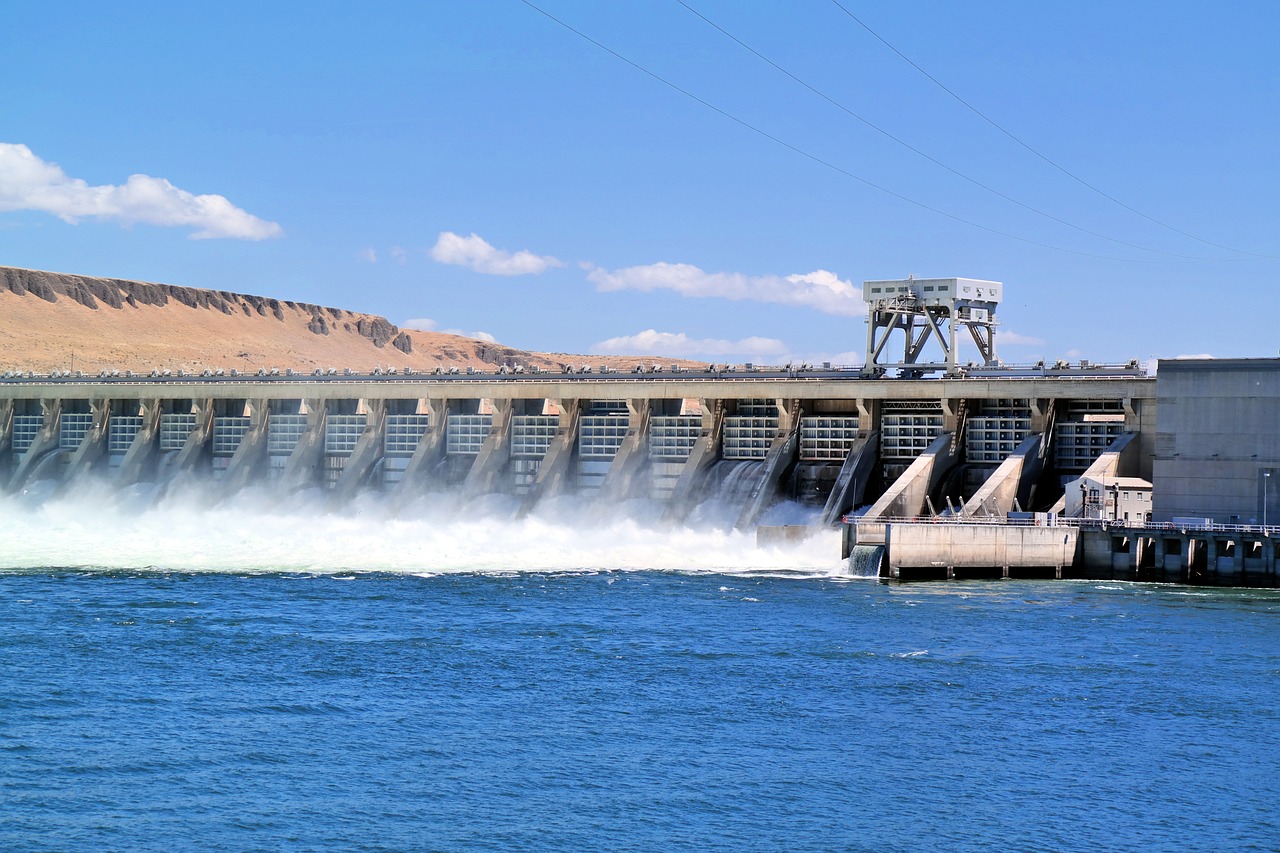Introduction
The 21st century is already witnessing a fundamental shift in the drivers of global conflict. As Ismail Serageldin, the Egyptian scholar and former Vice President of the World Bank, famously stated: “If the wars of the last century were fought over oil, those of this century will be fought over water.” Nowhere is this prediction more evident than in Asia, where water scarcity has become a critical issue for millions of people and an ever-growing source of geopolitical tension. From the Himalayas to the Mekong Delta, the rivers that provide sustenance to billions of people are at the heart of disputes involving water rights, environmental sustainability, and regional power dynamics.
Asia’s river systems are some of the most important on the planet, providing water to roughly 5 billion people—more than half the world’s population. But climate change, rapid industrialization, urbanization, and infrastructural development have altered the delicate balance of these vital watercourses. In particular, upstream nations’ efforts to harness and control these rivers, through the construction of dams, reservoirs, and diversion projects, have triggered profound consequences for downstream countries. The result is an escalating series of tensions that threaten not just regional security but the survival of millions who depend on these rivers for their livelihoods.
This article examines the key issues surrounding water scarcity in Asia, the geopolitical ramifications of competing water claims, the environmental challenges of river management, and the potential for conflict or cooperation among the nations sharing these vital water resources.
1. The Rivers of Asia: Lifelines in Crisis
Asia’s major river systems—the Indus, Ganges, Brahmaputra, Mekong, and Yangtze—serve as the lifeblood for agriculture, industry, and domestic consumption. These rivers are crucial for the economies and food security of the nations they traverse.
The Indus River System
The Indus River flows from Tibet (China) into Pakistan, with tributaries in India. It is one of the world’s most transboundary rivers, supporting over 200 million people in the region. The Indus Waters Treaty (1960) between India and Pakistan governs water usage rights, with India granted control over the eastern rivers and Pakistan the western rivers. However, tensions over dam construction in India and Pakistan’s dependence on irrigation have frequently led to disputes. Pakistan’s concerns over India’s upstream water projects, such as the controversial Baglihar Dam and the Kishanganga Dam, have raised fears of water scarcity, especially during droughts.
The Ganges and Brahmaputra Systems
The Ganges (or Ganga) river, originating in the Indian Himalayas, is sacred to Hindus and a primary source of water for over 400 million people in India, Bangladesh, and Nepal. The Ganges basin is already under pressure due to overuse, pollution, and the impacts of climate change. The Brahmaputra, which originates in Tibet (China), flows through India and Bangladesh, and shares similar geopolitical sensitivities. China’s increasing control over the upstream flow of the Brahmaputra by constructing dams on the Yarlung Tsangpo (the Tibetan name for the Brahmaputra) has alarmed India and Bangladesh. These nations fear that such upstream projects could limit their access to water and impact agricultural productivity, leading to regional instability.
The Mekong River System
The Mekong River flows from the Tibetan Plateau through China, Myanmar, Laos, Thailand, Cambodia, and Vietnam, supporting over 60 million people. The Upper Mekong (China) has been heavily affected by damming, especially the construction of dams like the Gongguoqiao and Manwan dams, which have led to significant reductions in water flow downstream. Lower Mekong countries, including Vietnam and Cambodia, are highly dependent on the river for irrigation, fishing, and transportation. Disputes have flared over China’s control of water flows, and the construction of dams on the river has raised concerns about its impact on agriculture, biodiversity, and food security in the Mekong Delta.
The Yangtze and Yellow Rivers
China’s two major rivers, the Yangtze and the Yellow River, are central to the country’s economy and agriculture. The Yangtze, Asia’s longest river, supports vast agricultural regions, including the Three Gorges Dam, the world’s largest hydropower project. While China’s extensive network of dams provides electricity, it has also raised environmental and social concerns, including the displacement of millions of people. The Yellow River, known as China’s “sorrow” due to its history of devastating floods, has seen significant diversion projects that have strained water supplies to downstream regions.
2. The Drivers of Water Scarcity
The scarcity of water in Asia is driven by several interrelated factors, ranging from environmental degradation and climate change to rapid population growth and industrial development.
Climate Change and Glacial Melting
The impact of climate change on Asia’s water resources cannot be overstated. Many of Asia’s major rivers are fed by glaciers in the Himalayas and Tibetan Plateau, and these glaciers are rapidly retreating due to rising temperatures. For instance, the Indus and Ganges rivers are both heavily reliant on glacial melt, which is expected to decrease over the coming decades, reducing water flow and increasing the risk of drought. Additionally, the shifting of monsoon patterns, which provide a significant portion of water for the region, has made water availability increasingly unpredictable.
Overuse and Pollution
Over-extraction of water for agricultural irrigation, urban development, and industrial use has placed significant pressure on Asia’s rivers. For example, in the Ganges basin, water extraction for irrigation and industrial purposes has led to severe reductions in river flow, particularly in the dry season. Pollution has also become a critical issue, with many of Asia’s rivers—especially the Ganges, Yangtze, and Mekong—suffering from the heavy discharge of untreated sewage and industrial waste.
Population Growth and Urbanization
Asia is home to over 60% of the world’s population, with many countries experiencing rapid urbanization. As cities expand, water demand grows, placing further strain on already stressed water sources. The burgeoning populations of countries like India and China have exacerbated competition for water, particularly in regions that are already prone to scarcity.
3. The Geopolitical Implications
The transboundary nature of Asia’s river systems means that any changes in water management can have far-reaching geopolitical consequences. The construction of dams and water diversion projects by upstream countries can dramatically affect downstream countries, leading to tensions and even conflict.
China’s Growing Influence
China has emerged as a dominant player in the geopolitics of water in Asia. Its extensive control over the upper reaches of the Mekong and Brahmaputra rivers has raised alarms in downstream countries. For instance, China’s decision to build dams on the Brahmaputra river has been a source of anxiety for both India and Bangladesh, as these countries rely heavily on its waters for agriculture and drinking. The Mekong is another point of contention, as China’s upstream damming projects threaten to disrupt the water supply to millions in Southeast Asia.
China’s insistence on unilateral water management, without consulting downstream nations, has led to calls for more cooperative governance. For example, the Mekong River Commission (MRC), which includes Cambodia, Laos, Thailand, and Vietnam, has struggled to coordinate with China, which is not a member. Similarly, the lack of transparency in China’s water management policies has fueled distrust among its neighbors, raising the risk of diplomatic conflict.
India-Pakistan Tensions
The ongoing tensions between India and Pakistan over the Indus River system have long been a flashpoint. The Indus Waters Treaty was designed to prevent conflict, but the growing demand for water in both countries has intensified the dispute. Pakistan views India’s control over the river’s eastern tributaries as a threat to its water security, especially during periods of drought. In contrast, India has expressed concerns about Pakistan’s water use on its side of the border and the potential for inequitable use.
Southeast Asia’s Struggle for Equitable Sharing
Countries in the Mekong Basin—especially Vietnam, Cambodia, Laos, and Thailand—are increasingly concerned about the implications of China’s control over the upper Mekong. The Mekong River Commission, which promotes cooperation between these countries, faces significant challenges in negotiating with China, a non-member that wields significant influence over the river’s flow. The Mekong Delta, one of the world’s most fertile regions, is especially vulnerable to the effects of upstream damming, which has already led to reduced fish stocks, saltwater intrusion, and declining agricultural yields.
4. The Path Forward: Cooperation or Conflict?
The challenges posed by water scarcity and geopolitical tensions in Asia require a delicate balance between national interests and regional cooperation. Several strategies could help prevent conflict and promote sustainable water management:
1. International Water Treaties and Cooperation
Regional agreements, like the Indus Waters Treaty or the Mekong River Commission, can play a crucial role in ensuring equitable access to shared water resources. However, these treaties need to be updated and strengthened to address new realities, including climate change, growing populations, and changing economic needs.
2. Environmental and Technological Innovation
Technological solutions, such as water recycling, desalination, and more efficient irrigation techniques, can help mitigate some of the pressures on water supplies. Additionally, ecosystem-based approaches to river management—such as restoring wetlands, preserving floodplains, and maintaining natural flow patterns—can help safeguard water resources while also promoting biodiversity.
3.
Conflict Resolution Mechanisms
Given the risk of escalating tensions, establishing effective conflict resolution mechanisms—such as international arbitration, joint water management bodies, and early-warning systems—could help prevent disputes from turning into violent conflict.
Conclusion
Water scarcity in Asia is not just a regional issue but a global one, with profound implications for geopolitics, human security, and environmental sustainability. The challenge is not only about managing the precious resource but also navigating the complex web of interests, power dynamics, and historical grievances that shape the region’s water politics. As water becomes an increasingly contested commodity, the world will be watching how Asia’s nations respond—whether through cooperation and innovation or, tragically, through conflict. The future of billions of people depends on the choices made today.
Here are some key references and sources for further reading on the issues surrounding water scarcity, geopolitical tensions, and transboundary river management in Asia:
### Books and Articles:
1. **Serageldin, Ismail**. “Water: A Matter of Life and Death.” *The Guardian*, September 2002.
– Serageldin’s insights on the growing importance of water resources in global geopolitics and his prediction of future conflicts over water can be found in this article, offering a framework for understanding water as a geopolitical issue.
2. **Kumar, Ramesh**. *Water Politics in South Asia: Contemporary and Future Perspectives*. Springer, 2020.
– This book explores the complex politics of water distribution and conflict in South Asia, focusing on India, Pakistan, and Bangladesh.
3. **Zarfl, Christian** et al. “The Impact of Dams on River Ecosystems.” *Science*, vol. 360, no. 6387, 2018, pp. 195-197.
– This article discusses the environmental impacts of dam construction, with specific reference to rivers in Asia, including the Mekong and Brahmaputra.
4. **Frederick, Kenneth D.** “Water in the Asia-Pacific Region: Conflict and Cooperation.” *World Development*, vol. 31, no. 5, 2003, pp. 883–902.
– Frederick’s article offers a detailed analysis of water-related conflicts and cooperative efforts in the Asia-Pacific region, examining specific case studies.
5. **Biswas, Asit K.** “Water Management in the Mekong River Basin: Changing the Rules of the Game.” *Global Governance*, vol. 16, no. 3, 2010, pp. 351-374.
– Biswas discusses the challenges and evolving frameworks for water governance in the Mekong Basin, focusing on China’s role and regional cooperation.
6. **Sadoff, Claudia W.**, and **Grey, David**. “Beyond the River: The Benefits of Cooperation on International Rivers.” *Water Policy*, vol. 4, no. 5, 2002, pp. 389–403.
– This paper explores the benefits of cooperation over international rivers and the potential for conflict resolution, focusing on transboundary river systems in Asia.
7. **Kerr, Jonathon**. “China’s Role in the Geopolitics of Water in Asia.” *Asian Journal of Comparative Politics*, vol. 6, no. 1, 2020, pp. 52–68.
– Kerr examines China’s increasing dominance in managing Asia’s major rivers and the geopolitical implications of its actions on downstream countries.
### Reports and Policy Papers:
1. **Mekong River Commission (MRC)**. *State of the Basin Report 2020*.
– The MRC’s annual report provides an in-depth look at the state of the Mekong River, including its flow, water quality, and the implications of Chinese dam projects for downstream nations.
2. **Asian Development Bank (ADB)**. *Water in Asia: A Policy Brief*. 2013.
– This brief from ADB addresses the challenges of water scarcity, management, and climate change in Asia, with a particular focus on the relationship between water and economic development.
3. **World Bank**. *The World Bank’s Role in Managing Water Resources in South Asia*. World Bank Report, 2015.
– This report covers the role of the World Bank in addressing water-related challenges in South Asia, with a focus on transboundary water issues, particularly concerning the Indus and Ganges-Brahmaputra-Meghna systems.
4. **International Crisis Group**. *Water and Conflict in Asia: The Role of the Mekong and the Ganges.* Crisis Group Asia Report No. 271, 2014.
– This report discusses the growing water-related tensions in Asia, particularly in the Mekong and Ganges-Brahmaputra river basins, and the potential for conflict or cooperation.
### Government and NGO Reports:
1. **International Water Management Institute (IWMI)**. *Water Scarcity and Conflict in Asia: A Strategic Overview*. IWMI, 2020.
– IWMI explores the intersections between water scarcity and geopolitical tension, offering case studies on how countries in Asia are managing their water resources.
2. **United Nations Economic and Social Commission for Asia and the Pacific (ESCAP)**. *Water Resources in Asia: Regional Challenges and Cooperation*. ESCAP, 2012.
– This report offers a comprehensive analysis of water resources in Asia and the role of regional cooperation mechanisms in resolving disputes over shared water bodies.
### Websites and Other Sources:
1. **The Mekong River Commission (MRC)** – [www.mrcmekong.org](http://www.mrcmekong.org)
– The official site of the MRC provides updates on water management, basin status, and cooperative agreements between Mekong countries.
2. **The International Crisis Group** – [www.crisisgroup.org](http://www.crisisgroup.org)
– The ICG offers a wealth of resources, including reports and articles, on water-related conflicts in Asia and the geopolitical implications of transboundary water issues.
3. **The World Resources Institute (WRI)** – [www.wri.org](http://www.wri.org)
– The WRI provides data and research on water scarcity, with a focus on how climate change and human activity are exacerbating water shortages in Asia.
4. **Water Conflict Chronology** (Global Water Forum) – [www.globalwaterforum.org](http://www.globalwaterforum.org)
– This resource provides an interactive timeline of water-related conflicts around the world, including detailed case studies from Asia.
—
These references should give a robust overview of the key issues surrounding water scarcity and geopolitical tensions in Asia, offering insights into the underlying causes of conflict as well as potential pathways for cooperation and resolution.



